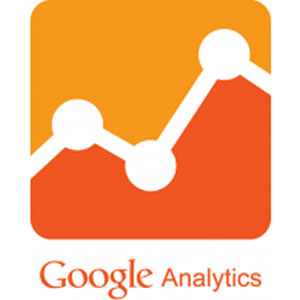Difference between Flurry and Google Analytics
Key Difference: Flurry is a mobile analytics company that also focuses on monetization and advertising. Flurry allows users to analyze consumer behavior through the data that the service collects. Google Analytics, on the other hand, is a service that generates detailed statistics about a website's traffic, including the website’s traffic sources. Google Analytics also offers Mobile App Analytics, which allow users to monitor new and relevant users on the mobile applications.
 Flurry is a mobile analytics company that also focuses on monetization and advertising. The company was founded in 2005 and primarily focuses on tracking application sessions on iOS, Android, Windows Phone, BlackBerry, HTML5, and JavaME platforms. In 2014, Flurry become a part of Yahoo!.
Flurry is a mobile analytics company that also focuses on monetization and advertising. The company was founded in 2005 and primarily focuses on tracking application sessions on iOS, Android, Windows Phone, BlackBerry, HTML5, and JavaME platforms. In 2014, Flurry become a part of Yahoo!.
Flurry allows users to analyze consumer behavior through the data that the service collects. It allows the consumer to track app usage, paying vs. non-paying users, time spend on the app, crash statistics, user demographics, etc., as well as track every menu tap, level completion, and purchase. In addition to tracking crash statistics, Flurry also gives developers helpful insights regarding the crash so that they may troubleshoot the problem. Flurry also allows users to set a quality metric for a campaign and see how it caters to the selected demographic.
Google Analytics, on the other hand, is a service that generates detailed statistics about a website's traffic, including the website’s traffic sources. It also measures the website’s conversions and sales. In addition, it also tracks visitors from all referrers, including search engines and social networks, direct visits and referring sites. It also tracks display advertising, pay-per-click networks, email marketing, and digital collateral such as links within PDF documents.
Google Analytics is also integrated with Google Adwords, which allows the consumer to track the amount the website has earned. A consumer can also track landing page quality and conversions, which are basically goals that can include sales, lead generation, viewing a specific page, or downloading a particular file. Google Analytics can help the user identify pages that are under-performing. It does this by measuring funnel visualization, where visitors came from, how long they stayed and their geographical position.
Google Analytics also offers more advanced features such as custom visitor segmentation. Google charges a fee for theses advanced features. Google Analytics also has an e-commerce reporting segment that can track sales activity and performance. This segment shows a site's transactions, revenue, and many other commerce-related metrics. Google Analytics also has a segment called Google Website Optimizer, which has since been rebranded as Google Analytics Content Experiments.
 Google Analytics also offers Mobile App Analytics, which allow users to monitor new and relevant users on the mobile applications, as well as Traffic Sources reports and Google Play integration that let the developer know what brought the user to the app in the first place. Mobile App Analytics also offers real-time reporting to keep the information as relevant as possible. It also offers behavioral features like Event Tracking and Flow Visualization that allow the developer to see where users take action, pause, or leave. With Mobile App Analytics developers can also set and track goal conversions such as purchases, clicks, or time spent on the app. The e-commerce reporting segment tracks real or virtual goods sold through the app. Additionally, it also track app crashes.
Google Analytics also offers Mobile App Analytics, which allow users to monitor new and relevant users on the mobile applications, as well as Traffic Sources reports and Google Play integration that let the developer know what brought the user to the app in the first place. Mobile App Analytics also offers real-time reporting to keep the information as relevant as possible. It also offers behavioral features like Event Tracking and Flow Visualization that allow the developer to see where users take action, pause, or leave. With Mobile App Analytics developers can also set and track goal conversions such as purchases, clicks, or time spent on the app. The e-commerce reporting segment tracks real or virtual goods sold through the app. Additionally, it also track app crashes.
The main difference between Flurry and Google Analytics is that Flurry Analytics is used track mobile application sessions, whereas Google Analytics can be used to track website statistics as well as mobile application sessions. Hence, while they both focus on analytics they actually cater to different segments. Flurry focuses primarily on mobile application sessions, whereas Google Analytics primarily focused on websites, and is now catering to mobile applications. Additionally, Google Analytics has a limit of 2 million hits processed per month, whereas Flurry has no such limitations.
Comparison between Flurry and Google Analytics:
|
|
Flurry Analytics |
Google Analytics |
|
Developer |
Flurry from Yahoo! |
|
|
Launched |
2005 |
2005 |
|
Type |
Advertising, Mobile Analysis |
Statistics, Analysis |
|
Operating system |
iOS, Android, Blackberry, Windows Phone, and mobile web. |
Cross-platform (web-based application) |
|
Features |
User segmentation, consumer funnels, and app portfolio analysis. Track app usage, paying vs. non-paying users, time spend on the app, crash statistics, user demographics, etc., as well as track every menu tap, level completion, and purchase. |
Monitor new and relevant users on the mobile applications, as well as Traffic Sources reports and Google Play integration. Offers real-time reporting. Offers behavioral features like Event Tracking and Flow Visualization. Set and track goal conversions such as purchases, clicks, or time spent on the app. Also tracks real or virtual goods sold. |
|
Price |
Services available for free |
Basic service is free of charge and a premium version is available for a fee |
Image Courtesy: flurry.com, brandsoftheworld.com









Add new comment